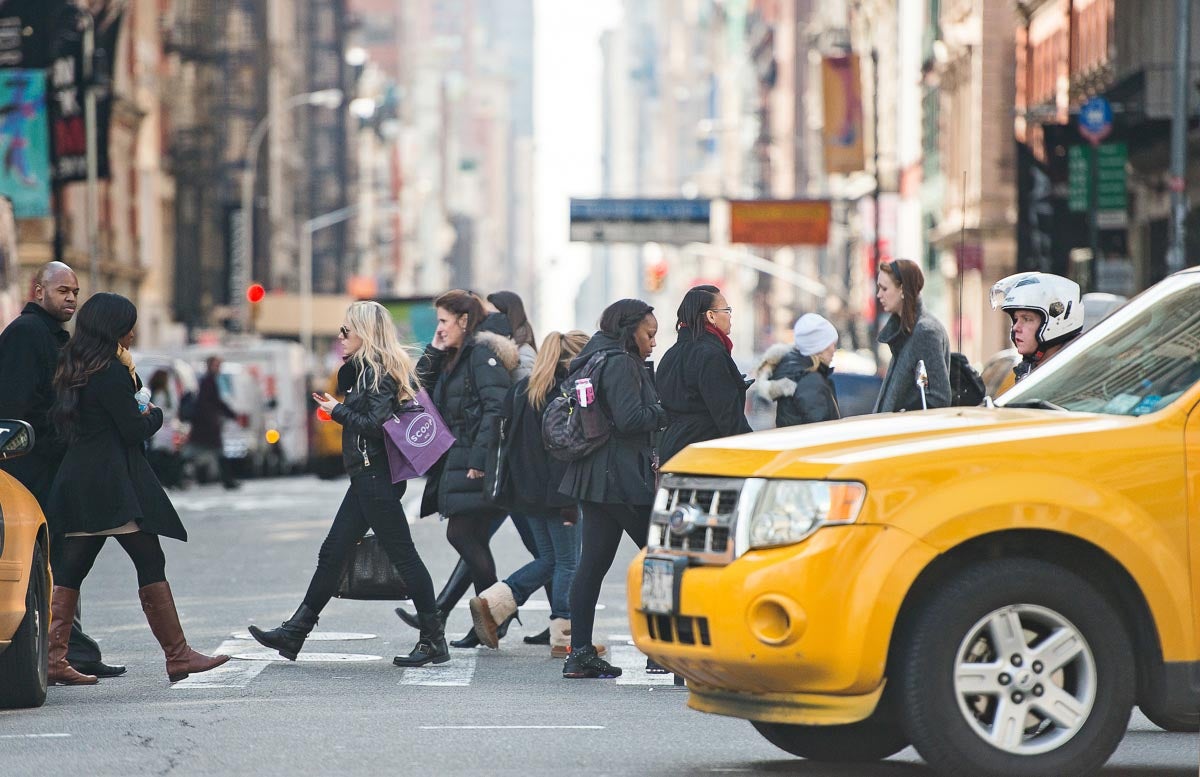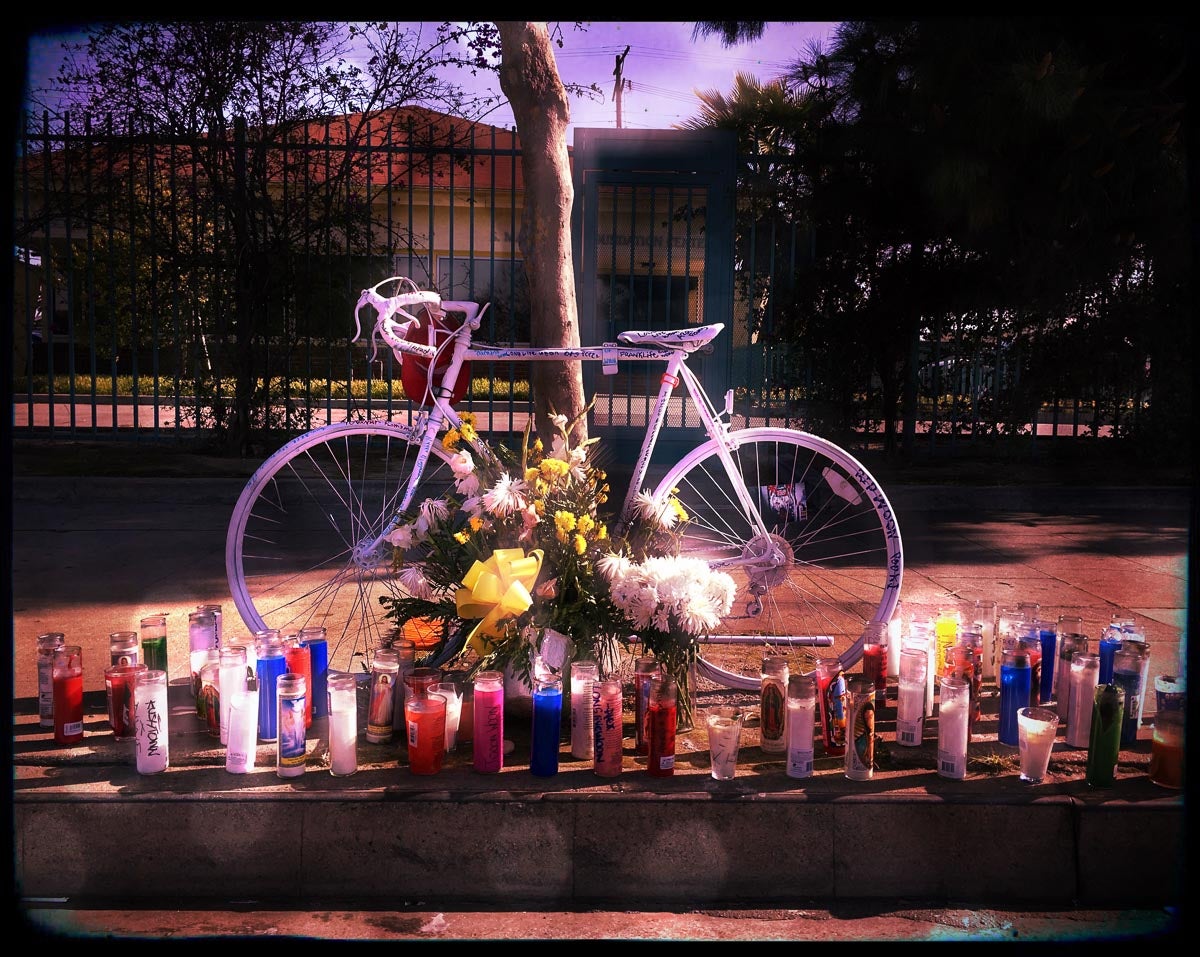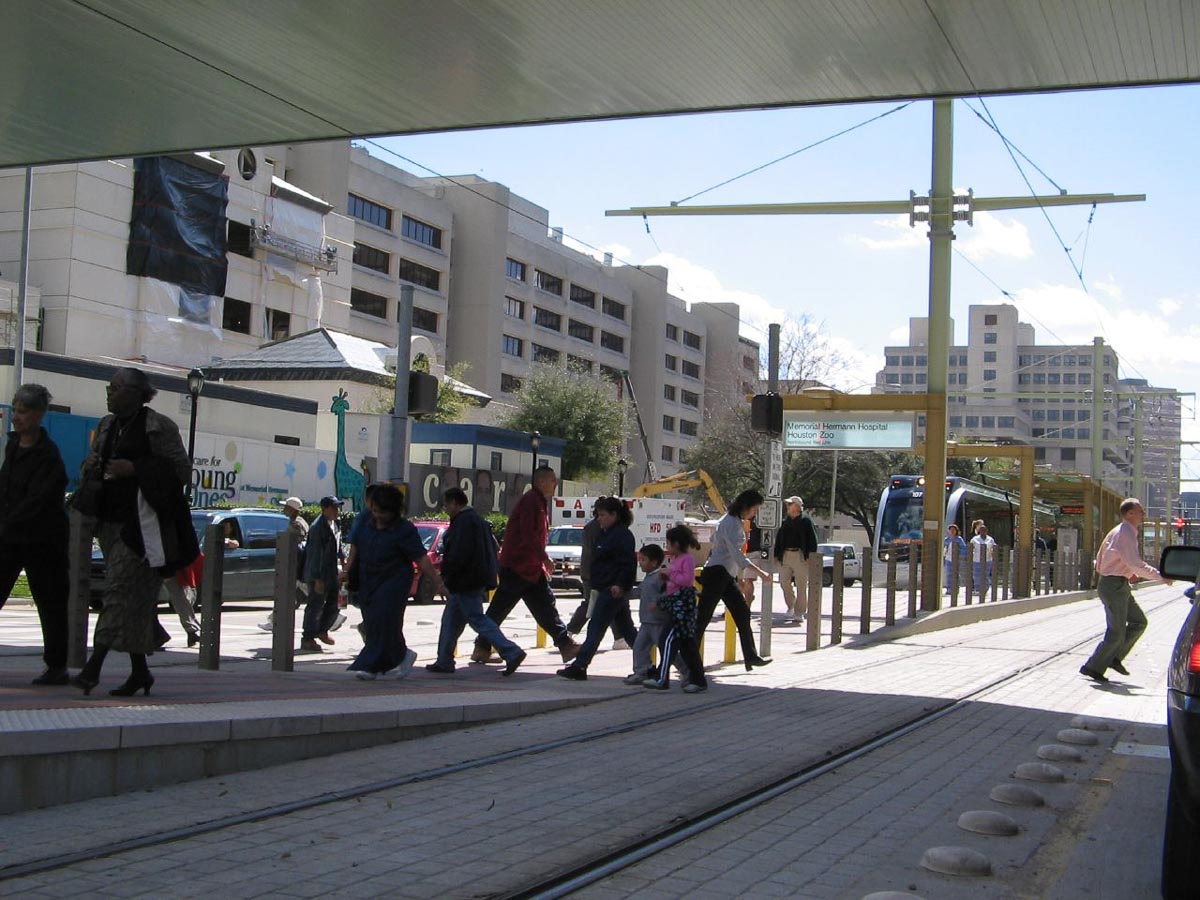I can still remember the exact moment when I first got scared as a pedestrian in Houston. It was a Saturday afternoon last fall, and I was at the intersection of Waugh and West Dallas – two fast-moving, four-lane arterial streets in the Montrose district. I was headed south across West Dallas. When the light changed, I got the walk signal, and I stepped off the curb. First, a car making a right turn from southbound Waugh onto westbound West Dallas cut me off by a foot or two. Then a car making a left turn from northbound Waugh onto westbound West Dallas did the same.
In other words, walking legally in a crosswalk where I had the right of way, I almost got hit twice by separate fast-moving cars turning from opposite directions across my crosswalk. When I finally made it to the other side of the street, I felt myself shaking. I haven’t been the same since.
I have been a pedestrian my whole life – visual impairment has caused me to walk more, ride transit more often, and drive less than the average person – but walking in Houston has changed me in a way I never thought was possible. I am scared all the time and fatalistic about my chances. More important, I fear for the future of this great city – because as it grows and changes, especially in an era of self-driving cars, most of us will wind up interacting with busy city streets as pedestrians (and maybe as bicyclists too) far more than we do now. And that requires a profound change in our motoring culture – not just from motorists themselves, but also from the authorities – that so far just isn’t happening.
When a bicyclist was killed by a dump truck at the corner of Sunset and Main the other day – the second bicycling member of the Rice community to be killed at that intersection in the last eighteen months – the cops immediately told the TV reporters to warn bicyclists that when they are crossing the street in a crosswalk they should walk their bikes or else they will be violating the law. A number of folks – including BikeHouston – actually disputed this interpretation of the law, but whatever the law is the attitude is striking.
Think about it: A dump truck turned right across a crosswalk and killed a bicyclist going straight. The cops immediately warned bicyclists that they must walk their bikes and look out for vehicles. The cops did not warn drivers that when they are turning into a crosswalk, they might want to look to see if there is anybody there.
This kind of blaming and shaming pedestrians and bicyclists is not new. It dates back almost a century, to the 1920s, when American cities first passed jaywalking laws – essentially criminalizing the act of walking and relieving motorists of the responsibility to be careful. But the 21st Century city is going to be a very different place to move around in, and it’s time for Houston – along with other cities – to recognize that times have changed.

Photo: Flickr user Compass Image Database
Walking in most cities is unpleasant. I lived for many years in and around Los Angeles – a very car-centric place – and walking there was tough, though it’s gotten better. But the experience of walking in Houston is unlike anything I have ever experienced.
Part of it, understandably, is simply that motorists here are not accustomed to thinking there might be pedestrians, so they don’t look for them. And part of it is that motorists are human – emotional, distracted, focused on something else – a problem that has gotten worse in recent years. But to a surprising extent, motorists in Houston simply show a willful disrespect for pedestrians.
Almost every day, drivers cut me off or simply drive around me because they don’t want to wait. Many are driving with one hand, cell phone up against their ear. On a half-dozen occasions, I have come up to an intersection where I have the right of way, started to cross the street, and looked straight into the eyes of a driver looking right back at me. Each time, after looking at me while I approach the car, the driver has simply cut me off. As a result of these experiences, I’ve gotten much more hard-edged as a pedestrian. I try to make eye contact, but it’s not a kind or humane eye contact. It’s a mean, glaring, don’t-mess-with-me eye contact. Walking in Houston has, in a certain way, turned me into a New Yorker.
A lot of traffic engineers – especially in a place like Houston -- hold the view that the solution is that there should basically be no pedestrians or bicyclists. In order for everybody to be safe, everybody should be encapsulated in a personal vehicle. Based on my personal experience, a few Houston motorists seem to hold the same view. This makes engineering sense in a weird narrow way, but it’s basically a 20th Century suburban point of view. It’s not going to work in 21st Century Houston.
For one thing, more and more people cannot afford cars due to low wages. According to the Census Bureau there are 100,000 households in Harris County that have no vehicle at all. In addition, there are more than 140,000 households that have two people – presumably adults – and only one vehicle. And there are countless other households where multiple adults must share vehicles because of their economic circumstances and have to rely either on public transportation or a complicated family system of chauffeuring and carpooling. As more and more people of modest means get displaced from the central city to the suburbs by gentrification – and they are farther away from bus lines – this problem is only going to get worse.
Second, it’s simply not possible to simultaneously expect to live in a city (a) that is prosperous and growing, (b) where everybody rides in a personal vehicle, and (c) where there is no traffic congestion. Among these three factors, sooner or later something has to give – and that something will probably be the use of the personal vehicle, at least as we know it now, which means more of us will be out on the streets.
There are many folks who believe that ride-hailing services like Uber and Lyft and self-driving cars will magically solve all these problems – especially for people like me, who have some impairment that prevents them from driving like everybody else. And it’s true that ride-hailing services are a boon to people like me who can afford them.
But ride-hailing services and self-driving cars, all by themselves, won’t solve the affordability problem for low-wage workers. Nobody making $9 an hour is going to pay $8 or $10 or $15 for an Uber ride instead of $1.25 for what sometimes can be an inconvenient Metro bus ride or nothing for a dangerous bicycle commute.
Nor will such services solve congestion, meaning not everyone will use them even if they can afford them. No matter how good ride-hailing services and self-driving cars become, it will still be cheaper and faster to get out of, for example, the Medical Center in the afternoon on a Red Line light-rail train than in a personal vehicle of any kind – just as it is now. Thousands of middle-class people who work in the Medical Center understand this and ride the train.
Most important, though, is the simple fact that ride-hailing services – and, eventually, self-driving cars – are not a substitute for suburban-style personal transportation. And that means more people will have a different type of relationship to the city around them.
In all likelihood, all of these services – fixed-rail transit, buses, ride-hailing services, pooled self-driving cars, bicycling and even walking short distances through city streets – will work together along with personal vehicles to create a more nimble and flexible transportation system that responds to people’s needs in 21st Century Houston, especially in the central parts of the city.
As this more varied transportation system emerges, one eternal truism will become more obvious: Everybody begins and ends every trip as a pedestrian. Lots more people will be exposed – as I am now – to the dangers of walking amidst city traffic. That means we all have a stake in making this city safer for pedestrians, because we are all pedestrians – and with the coming of self-driving vehicles, we will all become pedestrians more often than we are now.
In Los Angeles, Mayor Eric Garcetti has embraced the “Vision Zero” goal of zero pedestrian or bicyclist deaths. A week before the bicyclist was killed by the dump truck at Sunset and Main, two bicyclists, one pedestrian, and one man in a wheelchair were killed or harmed by hit-and-run drivers in the same neighborhood South L.A. The pedestrian had been attending a vigil for one of the bicyclists.

Photo: Flickr user Waltarrrrr
The series of collisions was big news in Los Angeles. Garcetti’s response was a promise to triple funding for the “Vision Zero” effort to $90 million per year. Neither the mayor nor the cops said the bicyclists were at fault. Nobody blamed the guy in the wheelchair for trying to cross a busy street.
After the fatal collision at Sunset and Main, my pal Raj Mankad wrote a powerful op-ed in the Chronicle basically saying there was no point in writing powerful op-eds about ped/bike safety in Houston because there is no hope for improvement.
I hope Raj is wrong, but I am afraid he is right. Sooner or later I’ll get struck by a vehicle in this town. It’s inevitable. I can only hope that when this collision happens that it will be with a small car, not a dump truck; that the vehicle will be going slow, not fast; that I will live, not die; and that the cops don’t tell Melanie Lawson that it was probably my fault. Because until Houston finally decides to get serious about changing its car culture, those are the choices that I – and thousands of other Houstonians – face.

